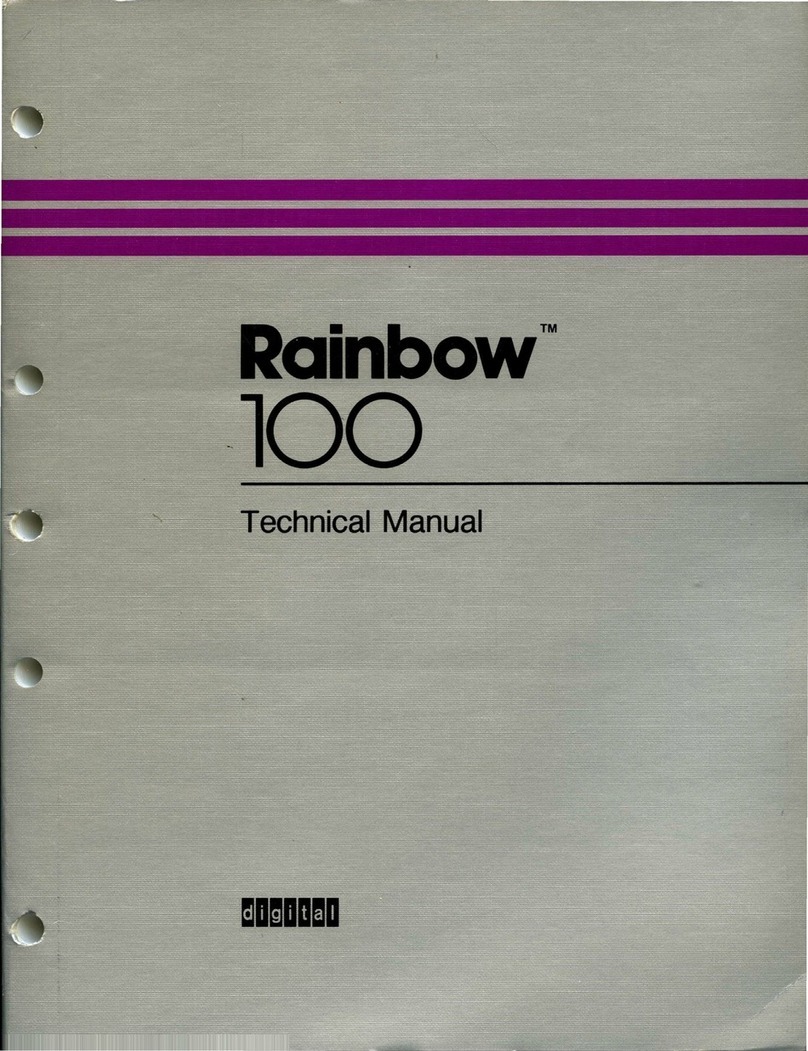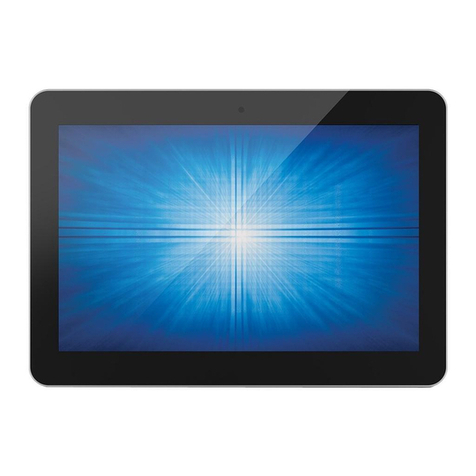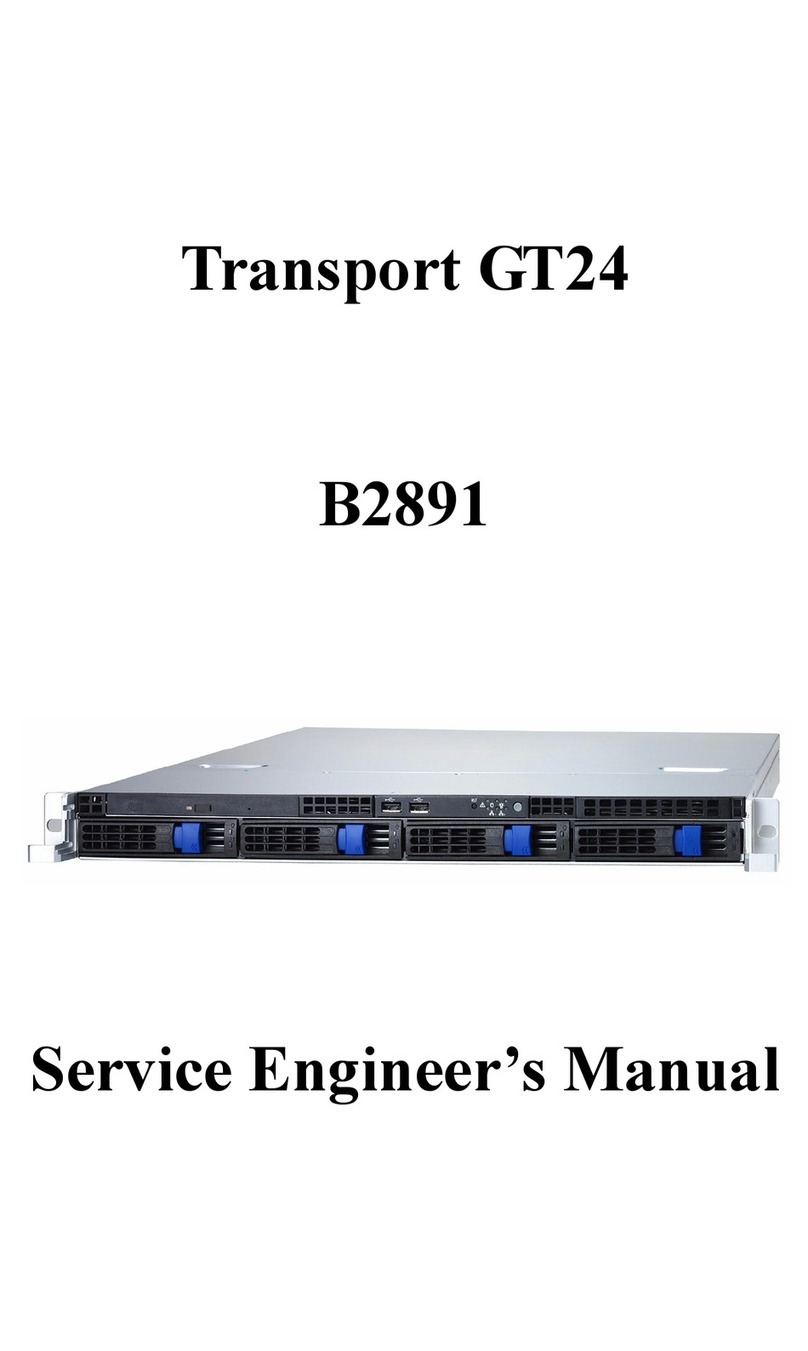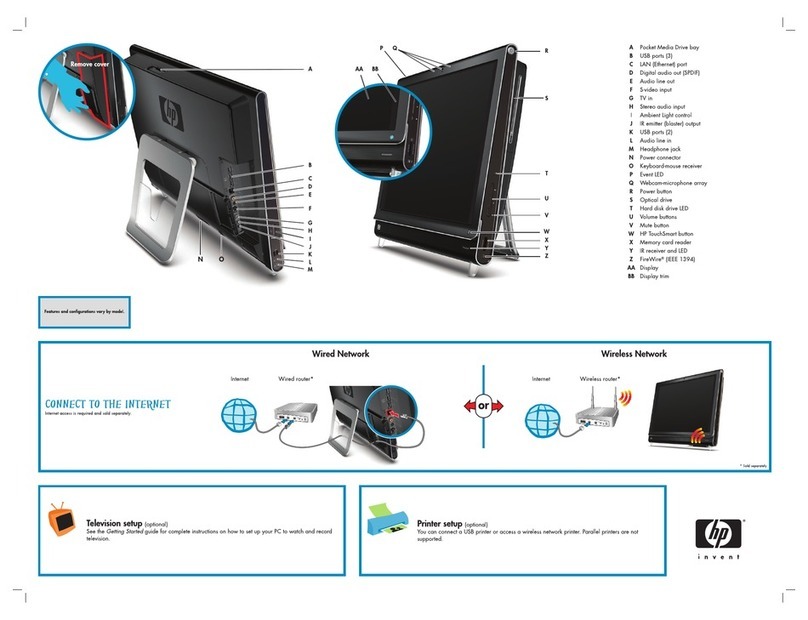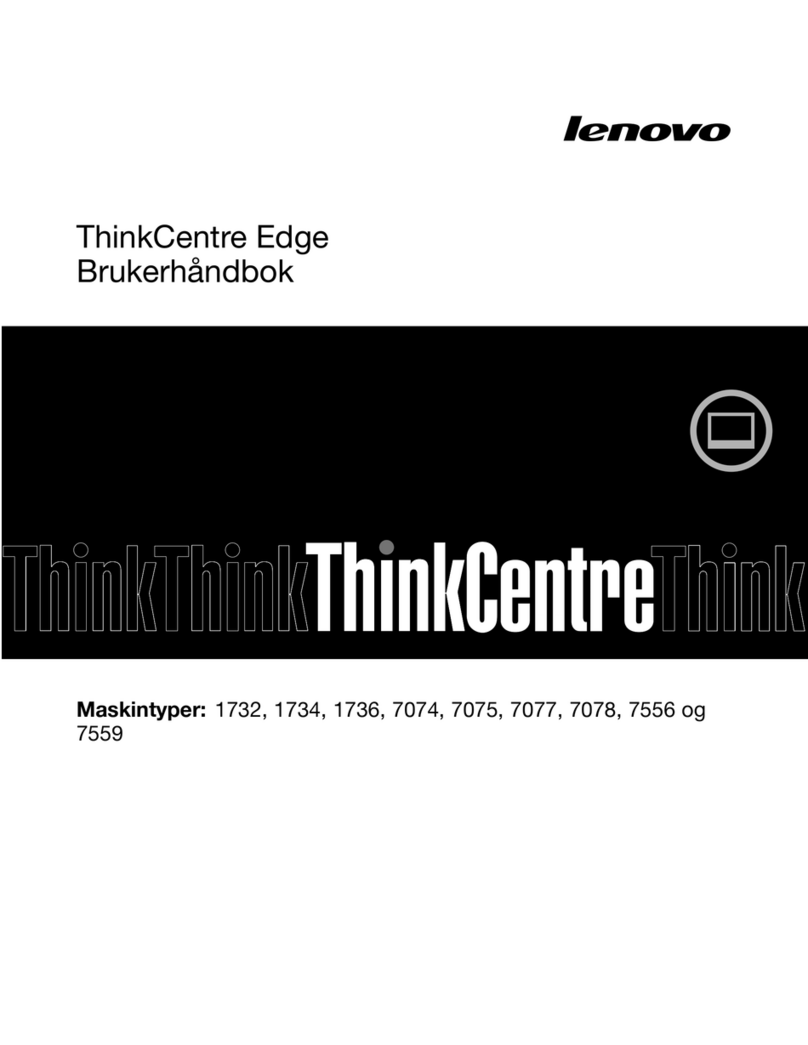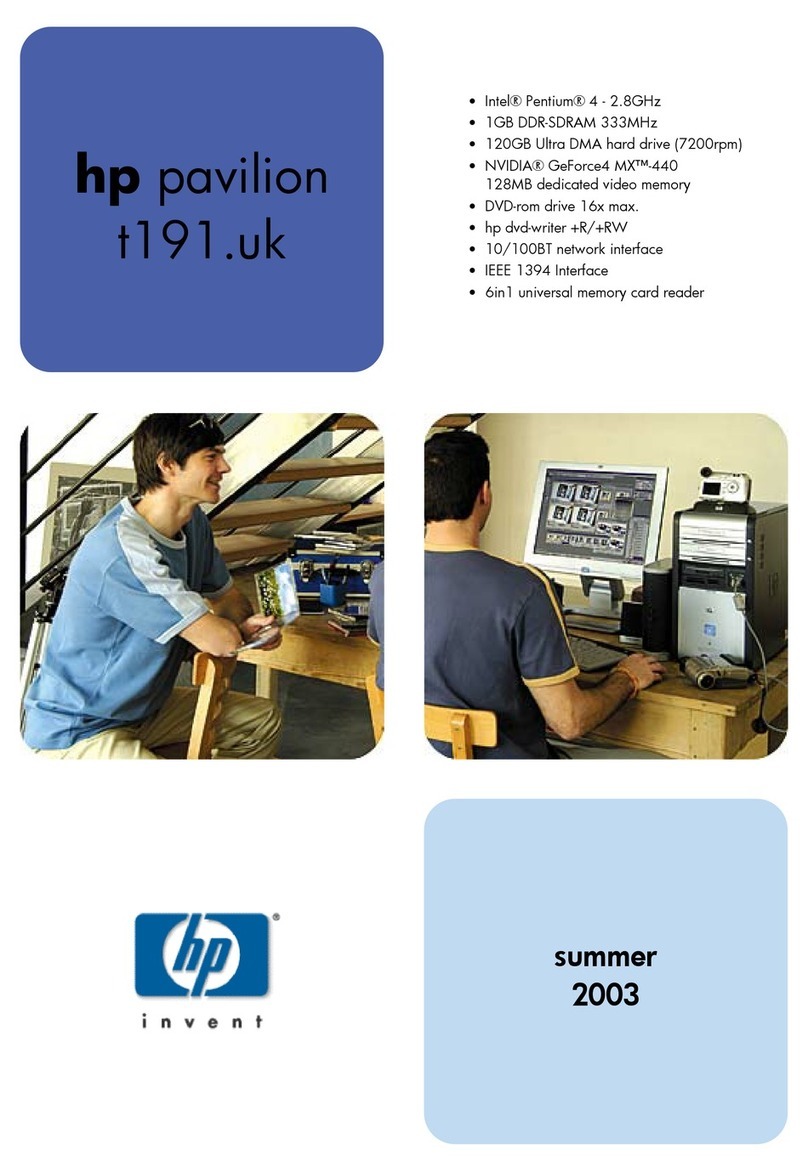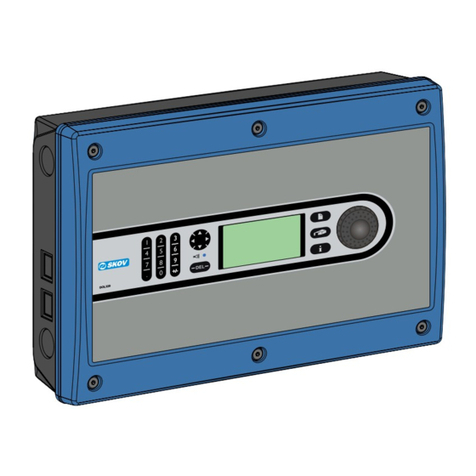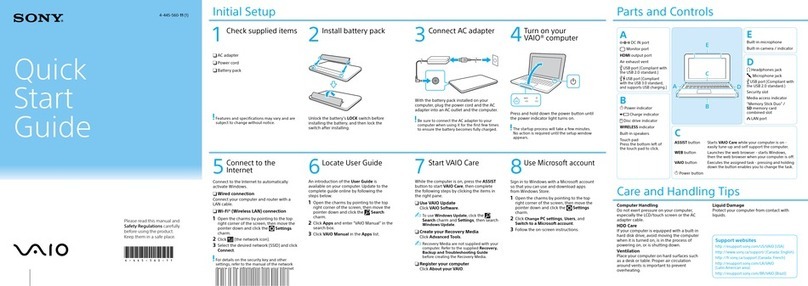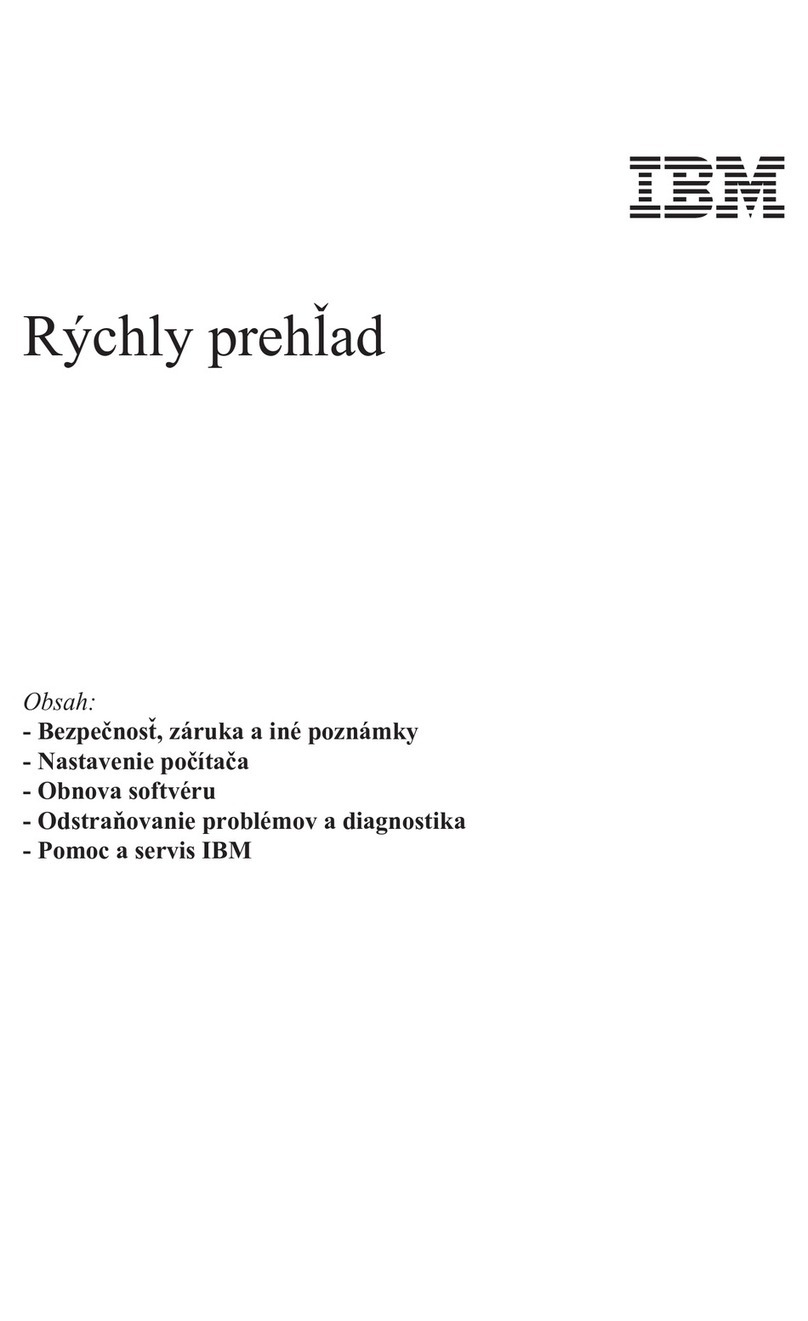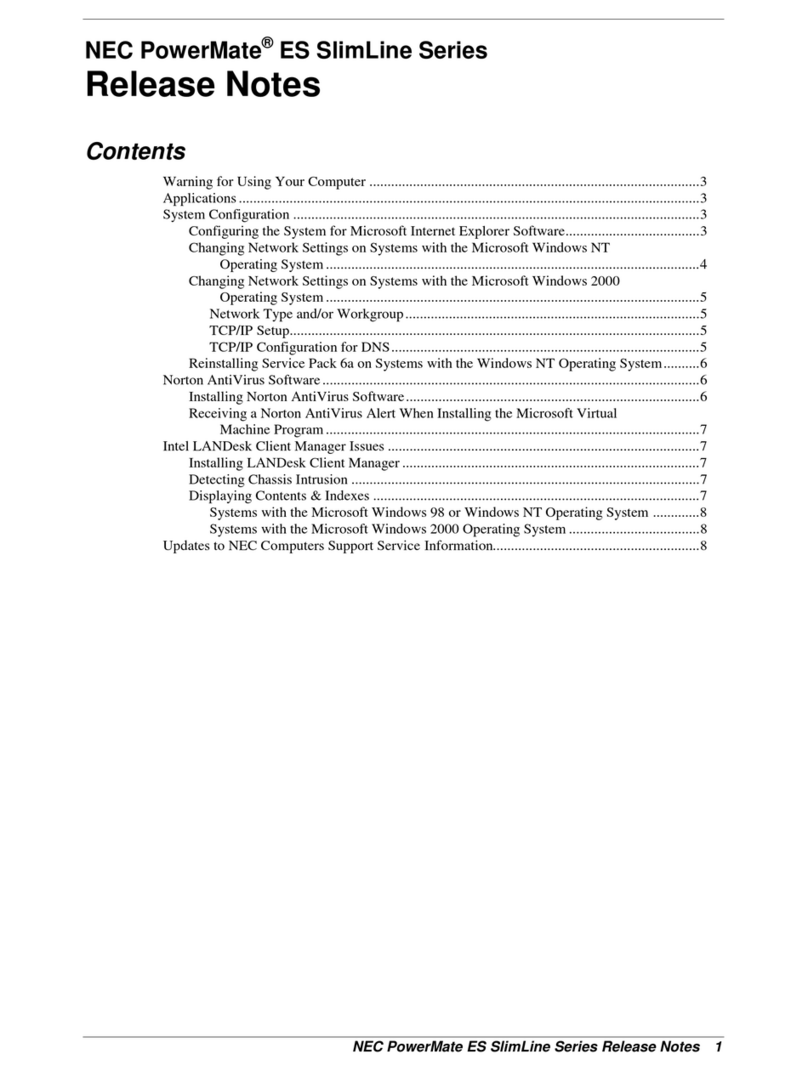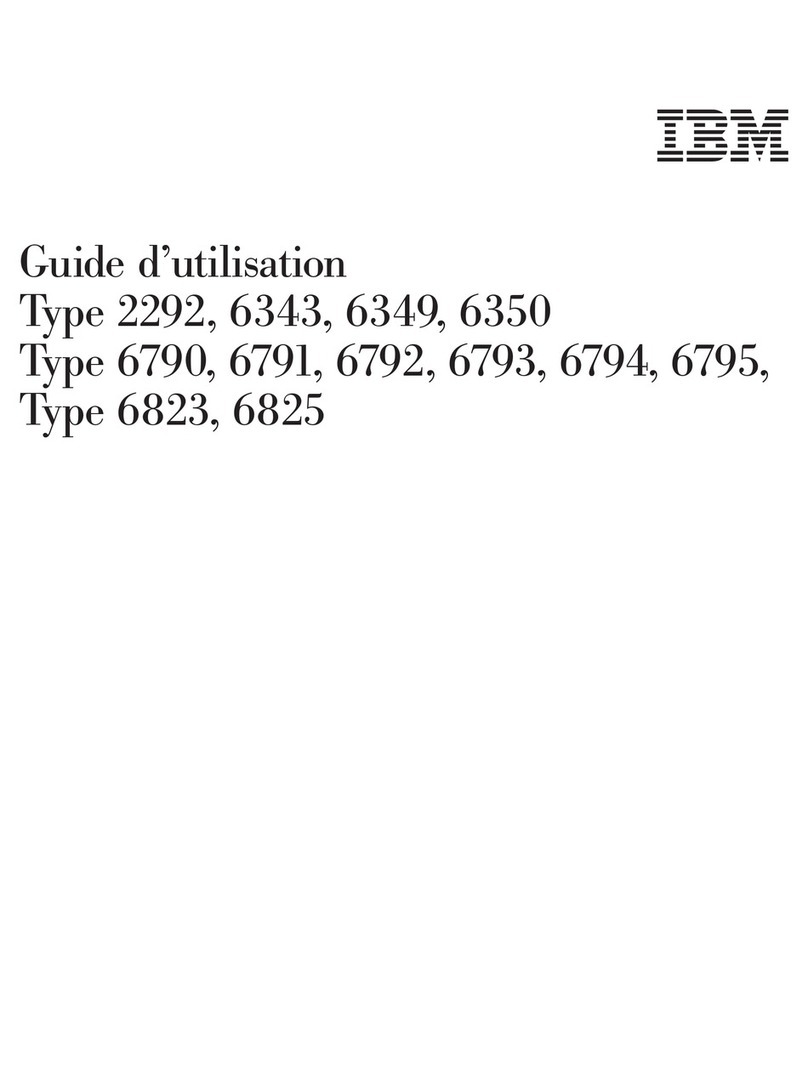Northern Micro Spirit Q270-AS SFF User manual

Spirit Q270-AS (SFF)
User Guide
Rev 2.0. August 2018

Please Read This First
Thank you for buying a Northern Micro Spirit Q270-AS computer. Northern Micro is
committed to providing our customers with the best value on the market today. This
means building the systems that meet your specific needs and supporting you with any
issues that you may encounter.
All Northern Micro Spirit computers are assembled and tested in our manufacturing
facility in Ottawa. A full Service & Support network across Canada stands behind every
Spirit system we build.
The computer you have purchased is optimized for today’s Operating Systems and
applications; however, in the future, you may come upon situations that demand
greater processing power or speed. Thanks to the latest advances in computer
hardware technology, your Spirit Q270-AS is completely upgradable. Contact your
Northern Micro Sales or Service representative for advice on how to upgrade your
computer should the need arise.
The Spirit Q270-AS is Energy Star and Epeat Gold certified. These environmental
standards ensure that the computer can take advantage of energy saving
features. Your Spirit Q270-AS is designed to run in sleep mode when user inactivity
reaches 30 minutes. Your monitor is designed to run in display sleep mode when user
inactivity reaches 15 minutes. You can "wake up" the computer or display by moving
the mouse or by hitting any key on the keyboard. If connected to a network, Wake-on-
LAN features can be enable to allow network administrators to wake up the computer
remotely or on a given schedule. The Spirit Q270-AS is certified to meet power
management criteria of the Microsoft logo program and is equipped with an 80 Plus
Gold power supply.
This manual has been prepared for both advanced and novice users. You will find
general PC information as well as detailed specifications about the system you have
purchased.
Northern Micro Sales and Service & Support Departments can be
reached at: 1-800-563-1007.
▪
Northern Micro is one of Canada's leading hardware integrators and custom
manufacturers of mid-range and high-end PCs and workstations.
Our mission is to provide customized high quality computer hardware products and
services to meet the advanced technical needs of highly knowledgeable customers who
seek to maximize their productivity.
To be fully responsive to our customers’ wants and needs, we also:
carry brand name computer products;▪
supply network peripheral equipment and multi-media products;▪
supply server / storage and printing solutions.▪
Through all facets of the operation, we are driven by our quality philosophy.
Northern Micro’s quality policy, communicated within and beyond the corporation, reads
as follows:

"Northern Micro is committed to delivering the ultimate customer satisfaction by
providing reliable, innovative and flexible computing solutions and by continuously
improving our product and service offerings".
In essence, Northern Micro, its management and its employees strive to be their
customers’ personal computer hardware specialists. Northern Micro’s focus is on quality
and customer satisfaction , and to provide products and services in complementary
areas of specialization. We strongly believe in treating customers as members of our
own family.
Additionally read our Privacy Statement .
Energy Star®
The Northern Micro Spirit Q270-AS is certified to meet Energy Star requirements.
ENERGY STAR is a voluntary program that helps businesses and individuals save money
and protect our climate through superior energy efficiency. Governments around the
world, including Canada's, have embraced the Energy Star program. Through its
partnerships with 18,000 private and public sector organizations, ENERGY STAR
delivers the technical information and tools that organizations and consumers need to
choose energy-efficient solutions and best management practices.
An ENERGY STAR qualified computer delivers substantial savings over a conventional
computer. Power management is important to saving energy, especially since
computers are often in use more hours per day than they used to be. ENERGY STAR
power management features place computers (CPU, hard drive, etc.) into a low-power
"sleep mode" after a designated period of inactivity. Simply hitting a key on the
keyboard or moving the mouse awakens the computer in a matter of seconds.
Additionally, ENERGY STAR qualified computers with networking capabilities have the
ability to enable and disable Wake On LAN for Sleep mode, allowing greater use of low
power modes without a loss of IT system maintenance capabilities.

Legend
Important▪
Caution▪
Danger▪
Note▪

Contact Us
Northern Micro Locations
Northern Micro is a Canada-wide operation with offices in Halifax, Québec City and Ottawa.
Our headquarters and manufacturing plant are located in Ottawa.
National Service Center :
1-800-563-1007 extension 241
NM Ottawa
3155 Swansea Cr.
Ottawa, Ontario
K1G 3J3
Phone: (613) 226-1117
Fax: (613) 226-3810
Toll Free: 1 (800) 563-1007
NM Halifax
102 Chain Lake Drive
Suite 220
Halifax, NS
B3S 1A7
Phone: (902) 422-9383
Fax: (902) 422-9384
NM Québec
3107 ave des Hotels, Suite 24
Sainte-Foy, Québec
G1W 4W5
Phone: (418) 654-1733
Fax: (418) 654-1744
Toll Free: 1 (877) 654-1733
On-Line Support
Northern Micro has been continuously investing time and resources to improve and
provide you with a wide range of on-line support:
The Service and Support Site where you can download the latest device drivers and
BIOS upgrade; visit our PC Archives for specifications, manuals and; place service
calls, etc.
x

Unpacking your Computer
The Spirit Q270-AS is packed with corrugated cardboard to keep it in place during
transit. To unpack it, cut the tape holding the flaps, fold back the flaps, and carefully
slide the PC and the packing material up out of the box.
Here’s what you will find in the box:
Mouse
▪
Keyboard▪
Power cord▪
Spirit System▪
Save all cartons and packing material for future shipping and transportation.▪
To repack the PC, reverse the above instructions.▪

Initial Computer Setup
Setting up your Computer
After unpacking your computer and checking all the items in the box, you are ready to set up
and start your computer.
Place the computer on a flat space.
▪
Locate your monitor and computer in a dust and moisture-free area where there will be
minimal glare on the screen.
▪
Connect the monitor cable to the video connector at the back of the computer.▪
Connect the mouse and keyboard cables to the matching connectors at the back of the
computer.
▪
Plug the monitor power cord into a dedicated electrical outlet or a surge-protected power
bar.
▪
Plug the system power cord into the back of the system in the matching connector; then
plug the cord into the power bar.
▪
Starting up the Computer for the first time
Turn on the devices in the following order:
Monitor
1.
External devices (USB or other)2.
System power
3.

Front Panel
USB Ports
There are two (2) additional USB 3.0 Ports on the Front panel of the computer.
Audio Ports
For convenience there is 1 (one) Microphone port and 1 (one) stereo line out (headphone)
port on the front panel.
System Power Switch
The system power switch is located on the front of the case. You should always be certain that
the power is turned off before modifying the hardware configuration in any way. Pushing the
power switch for less than 4 seconds places the system into sleep mode (if enabled in Setup).
When the power button is pressed for more than 4 seconds, the system enters the Soft-Off
mode.
Indicator Light
This light indicates the operation status of your computer.
Reset Button
The reset button allows you to restart the system without turning the power off. If you
encounter any problems while using unfamiliar software you can always restart quickly from
the RAM (Random Access Memory .) You will have to use a pen, pencil or other small object to
press the recessed Reset button. This feature was added to prevent accidental reset of the
unit.
Any data not saved to disk will be lost▪

Back Panel
The back panel has all the connections that lead from the system unit to external peripherals and
the power source.
Turn off all power switches before connecting or disconnecting
cables/wires!
▪
Ensure that cables/wires are attached to the peripheral device first
and connect to the outlet unit later.
▪
Turn the system unit power switch off before you plug the power cable
into an electrical outlet.
▪
See details on Rear Panel Connectors .
▪

Removing the Case Cover
Removing the case cover from your Spirit computer requires no tools.
Press down on the release lever.
1.
Slide the cover back towards the back.2.
To remove the front faceplate pull up the
three tabs (see photo) and move them
toward yourself.
3.
For better visibility, remove the drive
cage by pulling it up and toward yourself
as shown in the picture below. Two blue
thumb screws must first be removed at
the front of the case.
4.

Chassis Intrusion
The board suppo rts a chassis security feature that detects if the chassis cover is
removed. The security feature uses a mechanical switch on the chassis that attaches to
the chassis intrusion header. When the chassis cover is removed, the mechanical
switch is in the closed position.
The removal of the case cover while the system is powered on will
register a Chassis Intrusion Alert detected by the Chassis Intrusion lead
on the motherboard.
▪

Power Supply Specifications
SFF
Watts 300
Form Factor TFX
UL, CSA, QPS X
FCC, 1CES-003 X
+5, +12, +3.3 X
80 Plus Gold Certified X
X
X

Power Supply Removal
Remove the power supply screws.1.
Lift-out the power Supply. 2.

Final Power Connection Procedure
Connect the 2 x 4 power supply cable to the matching 2 x 4 power connector on
the board.
▪
Connect the 2 x 12 power supply cable to the matching 2 x 12 power connector
on the board.
▪
Failure to use an appropriate power supply and / or not connecting
the 12V (2x2) power connector to the desktop board may result in
damage to the board, or the system may not function properly.
▪
After all connections are made, close the system case cover.1.
Make sure that all switches are in the off position.2.
Connect the power supply cord into the power supply located on the back of your
system case.
3.
Connect the power cord onto a power outlet that is equipped with a surge
protector .
4.
You may then turn on your devices in the following order:5.
Monitor ▪
External Devices▪
System Power▪
The power LED on the front panel of the system case will light, as will the monitor
LED. The system will then run power-on tests. While the tests are running,
additional messages will appear on the screen. If you do not see anything within
30 seconds from the time you turn on the power, the system may have failed a
power-on test. Recheck your settings and connections or call Northern Micro for
assistance.
6.
During power-on, hold down the del key to enter BIOS setup.
7.

Before you Proceed
Take note of the following precautions before you install motherboard components or
change any motherboard settings.
Unplug the power cord from the wall socket before touching any component.▪
Use a grounded wrist strap or touch a safely grounded object or to metal
object, such as the power supply case, before handling components to avoid
damaging them due to static electricity
▪
Hold components by the edges to avoid touching the ICs on them.▪
Whenever you un-install any component, place it on a grounded anti-static
pad or in the bag that came with the component.
▪
Before you install or remove any component, ensure that the power supply
is switched off or the power cord is detached from the power supply. Failure
to do so may cause severe damage to the motherboard, peripherals, and/or
components.
▪
Onboard LED
The motherboard comes with a standby power LED that lights up to indicate that the
system is ON or in sleep mode. This is a reminder that you should shut down the
system and unplug the power cable before removing or plugging in any motherboard
component. The system power LED lights up when you turn on the system power, and
blinks when the system is in sleep mode.

Product Highlights
LGA1151 socket for Intel 7th Generation and 6th Generation Core
i7® / Core i5® / Core i3® / Celeron Processors
This motherboard supports Intel® 7th Generation and 6th generation
Core™ i7/i5/i3/Pentium®/Celeron® processors in the LGA1151
package, with graphics, memory and PCI Express controllers
integrated to support onboard graphics output with dedicated chipsets,
2-channel (4 DIMM) DDR4 memory and 16 PCI Express 3.0/2.0 lanes
for great graphics performance.
Intel Q270 Chipset
The Intel ® Q270 is a single-chipset design that supports 7th & 6th-
generation Intel LGA1151 Core™ i7 / Core i5 / Core i3 / Pentium ® /
Celeron ® processors. It provides improved performance by utilizing
serial point-to-point links, allowing increased bandwidth and stability.
It natively supports up to six USB 3.0 ports, six SATA 6Gbit/s ports,
and PCIe 3.0 lane speed support for faster data retrieval. Intel ® Q270
chipset also supports iGPU functionality, so you'll enjoy the very latest
Intel integrated graphics performance.
Dual-Channel DDR4 2133MHz support
The motherboard supports DDR4 memory that features data transfer
rates of 2400 / 2133 MHz to meet the higher bandwidth requirements
of the latest 3D graphics, multimedia , and Internet applications. The
dual-channel DDR4 architecture enlarges the bandwidth of your
system memory to boost system performance.
Native SATA 6.0 Gb/s support
The Intel® Q270 Express Chipset natively supports next-generation
Serial ATA (SATA ) storage interface . This motherboard delivers up to
6.0 Gb/s data transfer rates. Additionally, get enhanced scalability,
faster data retrieval, double the bandwidth of current bus systems.
Complete USB 3.0 Integration
ASUS facilitates strategic USB 3.0 accessibility for both the front and
rear panel – 10 USB3.0 ports in total. Experience the latest plug & play
connectivity at speeds up to 10 times faster than USB 2.0. This
motherboard affords greater convenience to high speed connectivity.
Intel vPro
Intel® vPro™ Technology allows IT organizations to remotely manage
corporate PCs, even when they are powered off or with non-functional
operating systems. It features Intel® Active Management Technology

and offers a lighter-weight form of virtualization to audit all Intel®
AMT-based platforms in a networked environment. PCs with Intel®
vPro™ Technology allow IT departments to remotely retrieve assets
and hardware/software inventories, contain security threats, resolve
system problems, and increase the uptime of desktops with lower
maintenance costs.
PCI Express 3.0
PCI Express ® 3.0 (PCIe 3.0) is the latest PCI Express bus standard
with improved encoding schemes that provide twice the performance
of the current PCIe 2.0.The total bandwidth for a x16 link reaches a
maximum of 32Gb/s, double the 16 Gb/s of PCIe 2.0 (in x16 mode).
As such, PCIe 3.0 provides users an unprecedented data speeds,
combined with the convenience and seamless transition offered by
complete backward compatibility with PCIe 1.0 and PCIe 2.0 devices.
PCIe 3.0 will become a must-have feature for users who wish to
improve and optimize graphic performance, as well as have the latest
technology available to them.
* PCI 3.0 speed is supported by Intel® 3rd and 4th
generation Core™ processors
Innovative ASUS features
ASUS UEFI BIOS
ASUS exclusive interface
Quick and Easy information for enhanced system
control
ASUS 5X Protection III
The Asus Prime Q270M-C motherboard is engineered with industry-
leading 5X Protection III, employing the finest components, excellent
circuit design, and exacting standards to guarantee the quality and
long-term durability of your motherboard. This includes:
- SafeSlot Core - Fortified PCIe with solid soldering
- LANGuard - Pumped-up Throughput. 2.5X higher surge
tolerance
- Overvoltage Protection - Excellent circuit-protecting power
design
- DIGI + VRM - Precision control for stable power
- Stainless-Steel Back I/O - 3X corrosion resistance for greater
durability

Motherboard Layout

Item
#
Connectors / Jumpers/ Slots
/ LED
Item
#
Connectors / Jumpers/ Slots /
LED
1
CPU and Chassis fan connectors
(4-pin CPU_Fan, 4-pin CHA_FAN
1/2)
12 USB 2.0 connectors (10-1 pin
USB78)
2ATX power connectors (24-pin
EATXPWR, 8-pin EATX12V) 13 Clear RTC RAM (2-pin CLRTC)
3 M.2 socket 3 14 LPC Debug header
4 Intel LGA1151 CPU socket 15 LPT connector (26-1 pin LPT)
5 DDR4 DIMM slots 16 Serial port connector (10-1 pin
COM)
6Intel Q270 Serial ATA 6.0Gb/s
connectors (7-pin SATA6G_1~6 )17 Front Panel audio connector (10-1
pin AAFP)
7USB 3.0 connector (20-1 pin
USB3_12, USB3_910) 18 PCI slot
8System panel connector (10-1
pin F_Panel) 19 Mono out header (2-pin
MONO_OUT)
9Speaker connector (4-pin
SPEAKER) 20 PCI Express 3.0/2.0 x1 slots
10 Chassis Intrusion header (4-1
pin CHASSIS) 21 PCI Express 3.0/2.0 x16 slots
11 Intel ME jumper (3-pin
DIS_ME)

Motherboard Installation and Removal
Before removing the Motherboard, ensure the power is off by checking the indicator light.
(See section Before you proceed )
When lit, the onboard LED indicates that the system is ON, in sleep mode or in soft-off
mode, not powered OFF.
Placement Direction
When installing the motherboard, make sure that you place it into the chassis in the correct
orientation. The edge with External ports goes to the rear part of the chassis as indicated on
the left side of the photo below.
Place eight screws into the holes indicated by the red circles to secure the
motherboard to the chassis. DO NOT overtighten the screws! Doing so can
damage the motherboard.
▪
Before you start, always make sure the computer is turned off. Observe
standard static-electricity discharge precautions. You can damage your
expansion card, the motherboard, or both, by not being careful about this.
▪
Table of contents
Other Northern Micro Desktop manuals

Northern Micro
Northern Micro Spirit P8Q77-AS User manual

Northern Micro
Northern Micro Spirit P8Q77-AS User manual

Northern Micro
Northern Micro Spirit Q370-AS User manual
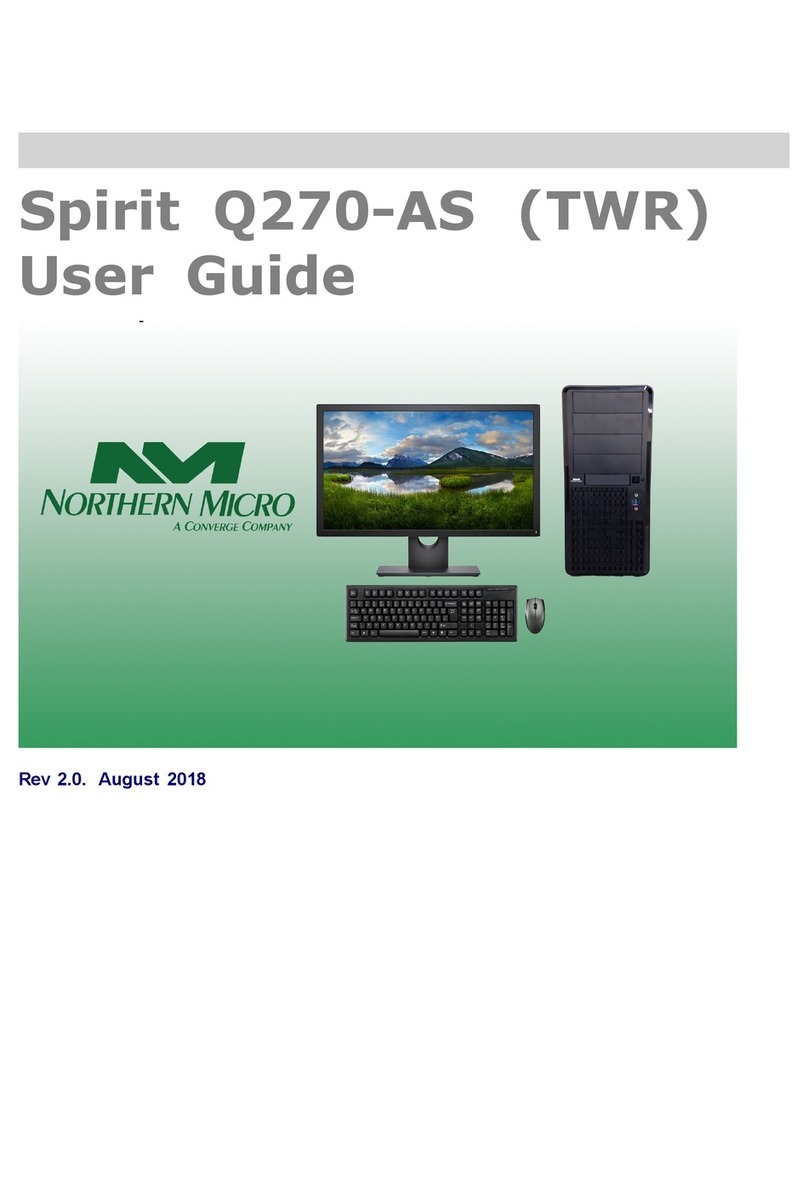
Northern Micro
Northern Micro Spirit Q270-AS TWR User manual

Northern Micro
Northern Micro Spirit X299-AS User manual

Northern Micro
Northern Micro Spirit P9X79-AS User manual

Northern Micro
Northern Micro Spirit P8Q87-AS User manual

